The xylophone is an enchanting percussion instrument and has captured the hearts of music lovers worldwide. From a babies first musical toy to a professional orchestra Its distinctive sound and captivating melodies have made it a prominent part of many people’s musical story.
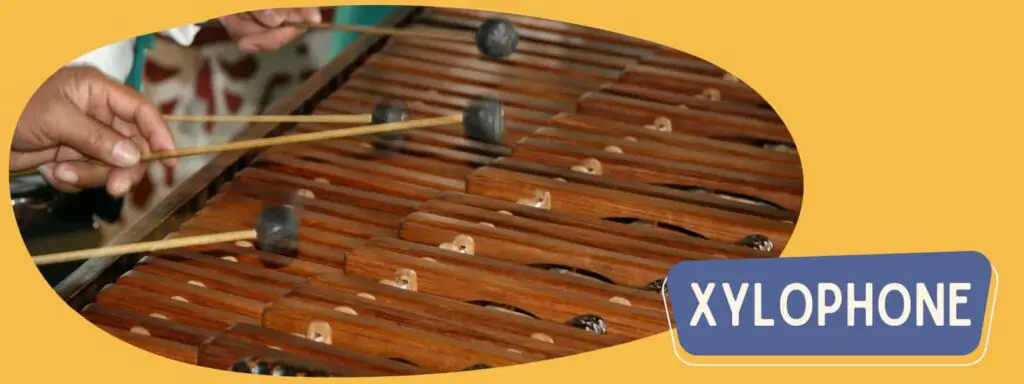
Our mission at Top Music Tips is to provide you with the best information, advice, and knowledge from anywhere across the web on your music topics.
This page will explore the fascinating world of the xylophone, including its history, anatomy, sound production, playing techniques, xylophone notes; sheet music; and songs, cultural significance, xylophones for children and babies, benefits, purchasing considerations, maintenance, and notable players. So, let’s delve into the melodious realm of the xylophone.
- Definition of a Xylophone
- Historical Background
- Importance and Popularity of Xylophones
- Anatomy of a Xylophone
- Types of Xylophones
- How Xylophones Produce Sound
- Different Playing Techniques for Xylophone
- Xylophone Notes, Sheet Music, and Songs
- Xylophone Music and Its Cultural Significance
- Xylophones for Babies and Children
- Benefits of Playing the Xylophone
- Choosing a Xylophone: Factors to Consider
- Maintenance and Care for Xylophones
- Popular Xylophone Players and Performances
- Frequently Asked Questions About the Xylophone
Definition of a Xylophone
A xylophone is a musical instrument belonging to the percussion family. It consists of a series of wooden bars arranged in order of pitch, which are struck with mallets to produce sound. Each bar corresponds to a specific note, enabling the player to create melodies and harmonies.
Historical Background
The origins of the xylophone can be traced back thousands of years to ancient civilizations such as Africa, Asia, and Central America. Early versions of the instrument were crafted using wood, bone, or gourds as resonators. Over time, xylophones evolved, gaining popularity in different cultures and musical traditions.
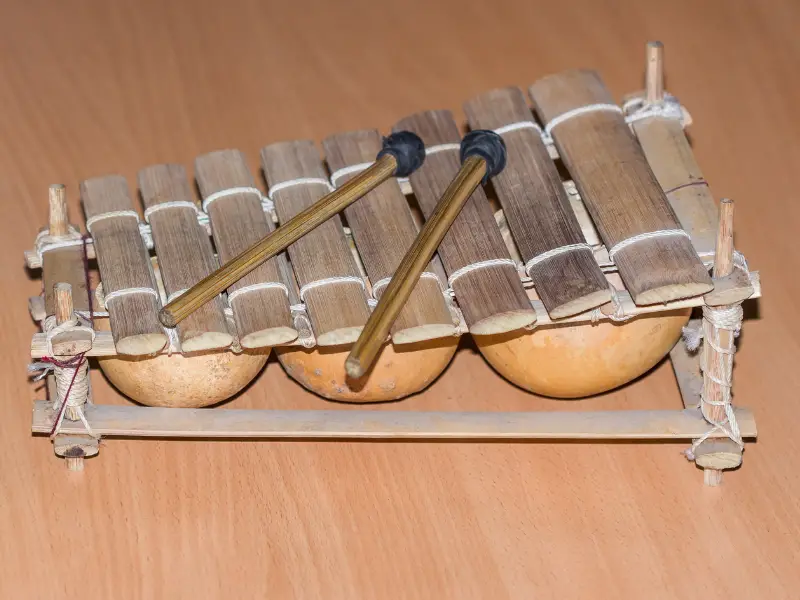
Importance and Popularity of Xylophones
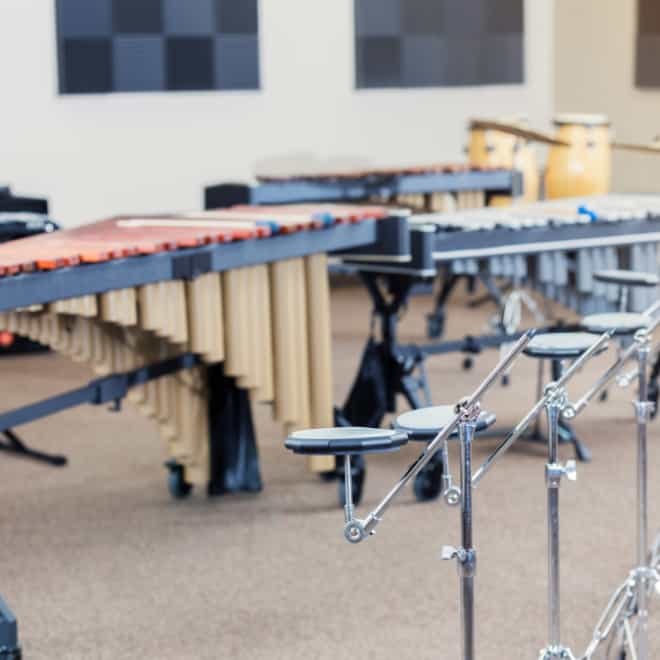
Xylophones hold a significant place in the world of music due to their unique tonal qualities and versatility.
They are widely used in orchestras, ensembles, bands, schools, and even solo performances.
The xylophone’s ability to produce bright, resonant tones makes it a valuable instrument in creating captivating melodies and adding depth to musical compositions.
Anatomy of a Xylophone
To better understand the xylophone, let’s examine its physical components and explore the different types available.
What is a Xylophone Made of?
Traditionally, xylophone bars were made of wood.
However, modern xylophones also employ synthetic materials like fiberglass or composite materials to achieve specific tonal characteristics.
The choice of material affects the overall sound quality and durability of the instrument.
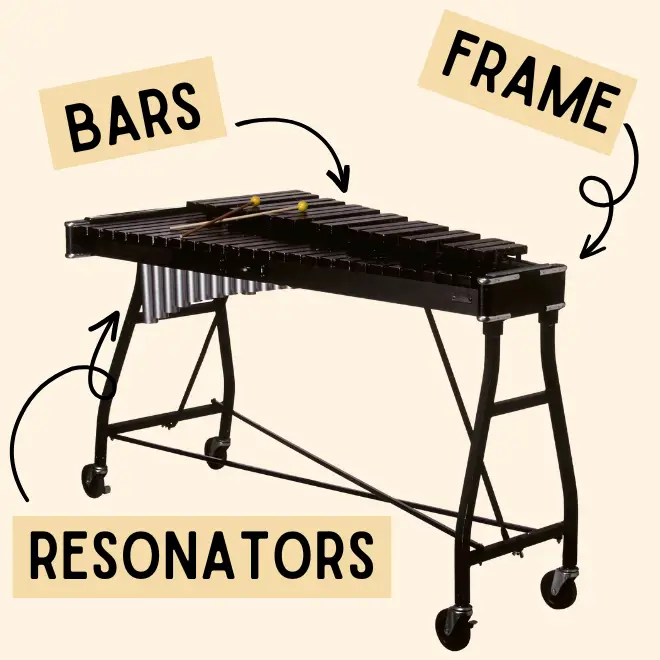
What Are the Different Parts of a Xylophone
A typical xylophone consists of the following components:
Bars: The bars are the primary sound-producing elements of the xylophone. These bars, typically made of hardwood or synthetic materials, are precisely tuned to specific pitches.
Resonators: Resonators are hollow tubes or boxes attached beneath the bars. They amplify the sound produced by the bars, giving the xylophone its characteristic resonance and sustain.
Frame: The frame holds the bars and resonators in place. It is usually made of wood or metal and provides stability to the instrument.
Types of Xylophones
There are various types of xylophones, each offering unique characteristics and purposes:
Concert Xylophone
This type of xylophone is used in professional settings, such as orchestras and concert halls. It typically has a range of 3 to 4 octaves and is meticulously crafted for exceptional sound quality and projection.
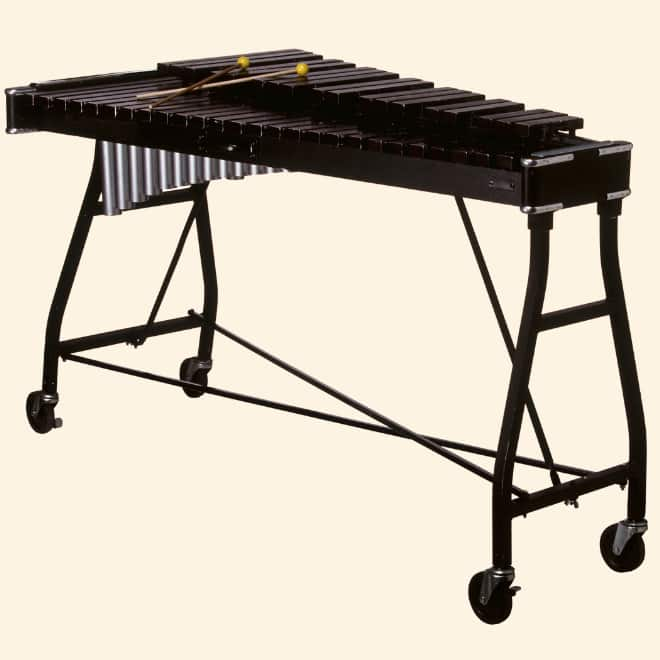
Student Xylophone (Bass Xylophone)
Designed for beginners and educational settings, student xylophones are more compact and affordable. They usually have a smaller range and are ideal for learning and practicing.
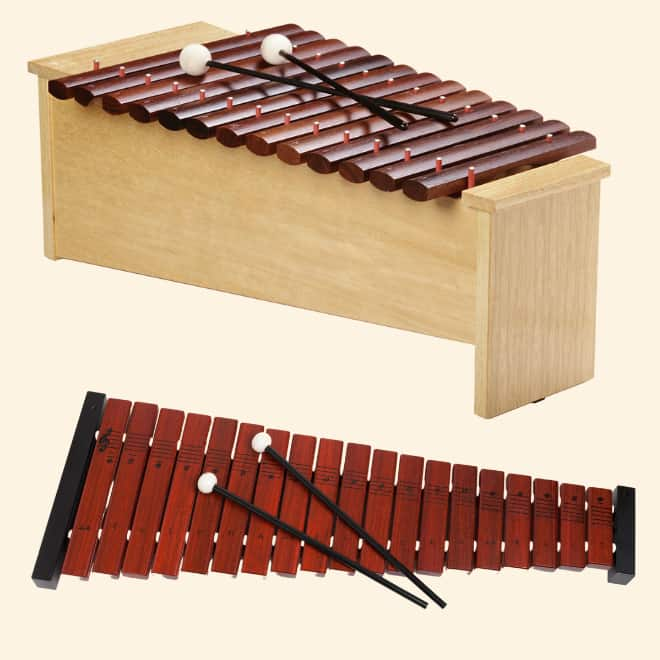
Toy Xylophone
Toy xylophones are miniature versions often made for children. They have a limited range and are primarily used for fun and early music exploration.
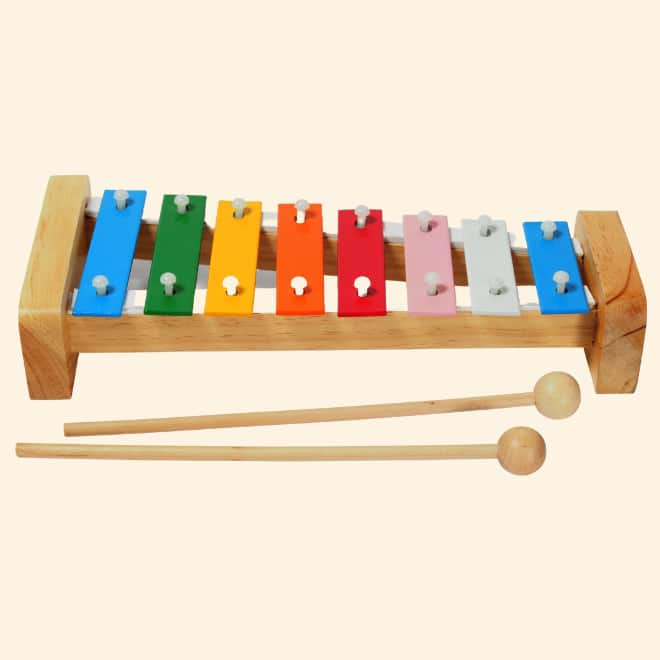
How Xylophones Produce Sound
“As I struck the xylophone’s bars, a chorus of crystal-clear notes rang out, embracing the room. Each tone carried a unique character, painting a vivid musical landscape. The sound danced with a lively rhythm, casting a spell of delight upon all who listened. It was a symphony of joy, inviting hearts to join its harmonious journey.“
Understanding how xylophones produce sound involves exploring the instrument’s sound-production mechanism and the materials used in its construction.
For an in-depth look at how Xylophones produce sound read this article.
But we will briefly explain it here as well. The short answer is….
How Sound is Made on a Xylophone
When a xylophone bar is struck with a mallet, it vibrates, producing sound waves. These sound waves travel through the bars and are amplified by the resonators beneath, resulting in the audible tones we hear. The size, shape, and material of the bars influence the pitch and timbre of the produced sound.
Different Playing Techniques for Xylophone
Mastering the xylophone involves learning various playing techniques to create different tones and expressiveness. Here are some common techniques used by xylophone players:
Overview of Mallet Techniques
Basic Stroke
The basic stroke involves striking the bar with the mallet in a downward motion, allowing the bar to resonate freely.
Dampening
Dampening is the technique of quickly touching the bar after striking it to shorten the sound and create staccato or muted effects.
Rolls
Rolls are created by rapidly bouncing the mallet on the bar, producing a continuous and flowing sound.
Techniques for Creating Different Tones
Dynamics
By adjusting the force with which the mallet strikes the bar, players can create variations in volume, from soft and delicate to loud and powerful.

Articulation
Players can alter the attack and release of each note to achieve different articulations, such as legato (smooth and connected) or staccato (short and detached).
Glissando
Glissando involves sliding the mallet along the length of the bar to create a smooth, sliding effect between notes.
Xylophone Notes, Sheet Music, and Songs
Learning Xylophone Notes
The wonderful thing about a xylophone is you don’t have to have a lot of musical experience to start making music. The notes are relatively easy to learn which means you can start playing immediately.
Each bar represents a specific note, and by striking the bars in the correct order, you can play melodies and songs. Learning to play proficiently involves memorizing the pitch associated with each bar and practicing the correct striking technique.

Reading Sheet Music
Sheet music acts as a visual representation of musical notes and rhythms.
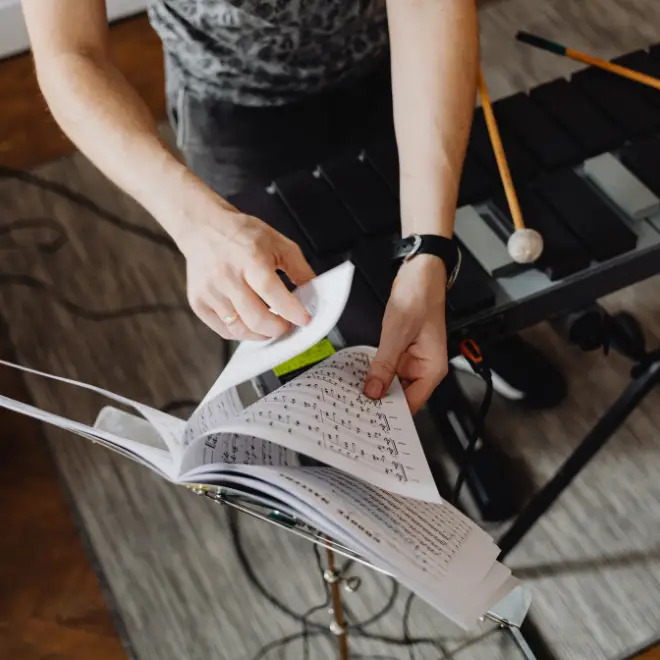
When learning xylophone notes, it can help to familiarize yourself with sheet music. The notes on sheet music correspond to the specific bars on the xylophone, indicating which bars to strike and when.
By reading sheet music, you can easily follow musical arrangements and play a wide range of songs.
Popular Xylophone Songs
There are a lot of fun songs that can be played on the xylophone from super easy beginner songs like “Twinkle Twinkle Little Star” to difficult concertos there’s something for everyone!
Some popular xylophone songs include “Baby Shark“, “Jingle Bells”, “The Entertainer” by Scott Joplin, “Linus and Lucy” by Vince Guaraldi, and “Over the Rainbow” from the movie “The Wizard of Oz.” Learning new songs to play can be fun and easy.

Exploring more difficult songs will enhance your playing skills and bring joy to your practice sessions.
Xylophone Music and Its Cultural Significance
The xylophone holds cultural significance in various parts of the world and has been used in diverse musical traditions throughout history. Historical Use of Xylophones in Different Cultures
In Africa: xylophones like the balafon and marimba have been integral to traditional music for centuries. These instruments are often associated with cultural celebrations, rituals, and storytelling.
“Music is the universal language that transcends boundaries, uniting cultures and weaving the threads of humanity together.”
In Asia: A traditional Asian percussion orchestra called Gamelan traditionally uses a xylophone. This musical ensemble in Indonesia is primarily composed of tuned gongs and metal-keyed instruments. It’s conducted by a drummer and often features voice, bamboo flute, xylophone, and stringed instruments.
In Central and South America: xylophones such as the Mexican marimba and Guatemalan marimba are prominent in folk and popular music. These instruments are often featured in lively and vibrant street performances, adding a rhythmic and melodic element to the music.
Mayan Marimba Music Antigua Guatemala
Xylophone in Contemporary Music Genres
Beyond its traditional roots, the xylophone has found its way into contemporary music genres. It has been incorporated into various musical styles, including jazz, pop, and even rock. Many modern composers and musicians have embraced the xylophone for its unique sound and its ability to add a playful or ethereal quality to their compositions.
Xylophones for Babies and Children
When it comes to introducing music to young children, the xylophone is a popular choice, and for good reason! Here are some of the reasons why this instrument is great for babies, toddlers, and children.
- Xylophones are an easy first exposure to musical instruments for kids and babies.
- They are easy for kids to make sounds on.
- Toy xylophones come in a ton of different shapes and sizes.
- Kids and babies love hitting things to make noise.
- Babies and kids love the bright and shiny colors of toy Xylophones.
- Gives them a way to be creative and express themselves.
- Develops their fine motor skills.
- Enhances their hand-eye coordination.
- Introduces musical concepts.

“The xylophone’s vibrant tones awaken a symphony of joy in babies, creating a harmonious bond between music and their curious hearts.”
Benefits of Playing the Xylophone
Playing the xylophone offers benefits to more than just babies and kids. Learning music in this way can offer a range of cognitive, physical, and therapeutic benefits for kids and adults. Let’s explore some of them:
Cognitive and Physical Benefits
Musical Development: Learning to play the xylophone helps develop musical skills such as rhythm, pitch recognition, and hand-eye coordination.
Fine Motor Skills: The precise movements required to strike the bars with mallets enhance dexterity and fine motor control.
Therapeutic Uses of Xylophone Playing
Stress Relief: Engaging in music-making, including playing the xylophone, can be a therapeutic outlet, reducing stress and promoting relaxation.
Emotional Expression: Playing the xylophone allows individuals to express their emotions through music, providing a cathartic and expressive experience.
Choosing a Xylophone: Factors to Consider
If you’re considering purchasing a xylophone, several factors should be taken into account:
Budget Considerations
Xylophones are available in a wide price range. Determining your budget will help narrow down the options and find a xylophone that suits your needs and financial capabilities.
Different Xylophone Models Available
Consider the intended use and skill level when selecting a xylophone. Student models are suitable for beginners and educational settings, while professional concert xylophones offer superior sound quality and are ideal for advanced players and performances.
It’s also essential to consider factors such as the instrument’s range, build quality, and portability based on your specific requirements.
Maintenance and Care for Xylophones
Proper maintenance and care ensure the longevity and optimal performance of your xylophone. Here are some guidelines:
Cleaning and Storage Guidelines
Regularly clean the bars and resonators with a soft, dry cloth to remove dust and debris. Avoid using water or harsh cleaning agents that may damage the instrument. When not in use, store the xylophone in a protective case or cover it to prevent dust accumulation and potential damage.
Handling and Mallet Maintenance
Handle the xylophone with care, avoiding excessive force or dropping the mallets on the bars. Replace worn-out or damaged mallets to maintain consistent sound quality and prevent potential damage to the bars.
Popular Xylophone Players and Performances
The xylophone has witnessed incredible performances by virtuosos who have showcased the instrument’s versatility and technical prowess. Here are a few notable xylophone players and iconic performances:
Notable Xylophone Virtuosos
- George Hamilton Green Jr: A composer and xylophonist known as the “World’s Greatest Xylophonist,” famous for his ragtime compositions.
- Teddy Brown (Abraham Himmelbrand): A virtuoso xylophonist and entertainer known for his fast-paced performances, who played with various orchestras and in famous British nightclubs.
- Yoichi Hiraoka: A Japanese xylophonist and pianist who became a national hero in Japan and later moved to the United States, performing extensively.
- Ruth Underwood: The first female on the list, known for her xylophone, marimba, and vibraphone skills, and her collaboration with Frank Zappa and The Mothers of Invention.
- Ian Finkel: Renowned xylophonist, entertainer, and author, famous for his virtuosic xylophone performances and contributions to the world of music.
Iconic Xylophone Performances
“The Golden Age” by Jim Henson: This iconic xylophone performance was featured in the opening theme of “The Muppet Show,” captivating audiences with its playful and upbeat melody.
“The Syncopated Clock” by Leroy Anderson: This lively and syncopated composition prominently features the xylophone, showcasing its ability to create rhythmic and melodic excitement.
Frequently Asked Questions About the Xylophone
The xylophone, with its enchanting sound and rich cultural history, continues to captivate music enthusiasts worldwide. Whether in traditional or contemporary settings, the xylophone adds a unique tonal quality and melodic flair to a wide range of musical genres.
Playing the xylophone not only brings joy and creativity but also offers cognitive, physical, and therapeutic benefits. By understanding its anatomy, sound production, playing techniques, cultural significance, and maintenance considerations, you can fully appreciate and enjoy the beautiful world of the xylophone.



